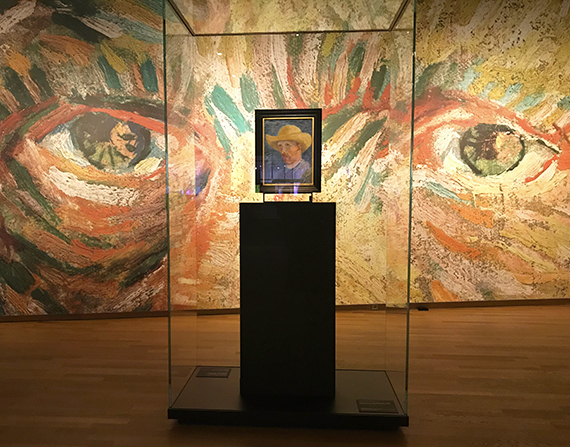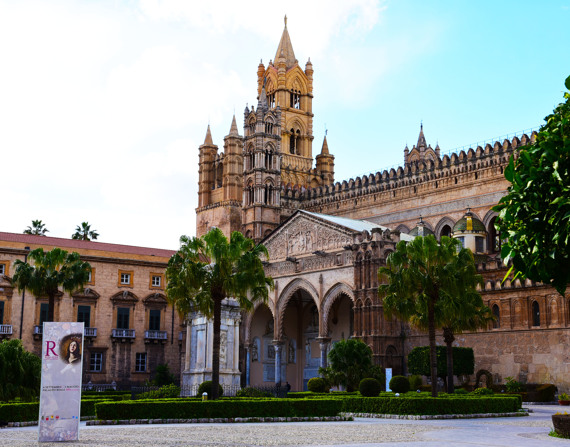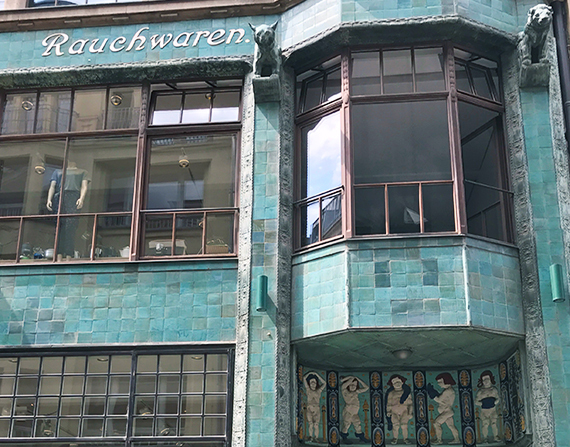Sicilian ceramics: pinecones and heads
Throughout Sicily, not only in shops and ateliers, but on verandas and terraces of many houses, we find the colorful and unmistakable pinecones and the adorned heads that carry a lot of symbolism beyond its decorative character. These heads, called "Teste di Moro" or "Moorish Heads", originated in the 11th century when a beautiful Sicilian girl was caring for her plants on her house’s terrace when a trader passed by and they suddenly fell in love, according to the legend. Romance was interrupted when she learned that her suitor already had a family and needed to travel back to his wife and children. So great was her anger that she beheaded herself, after one last night of love, before the traveler left. According to the legend, the head served as a pot for the basil the beautiful girl cultivated in her garden, which grew very rapidly and supposedly envied the neighborhood. A tradition of planting herbs on ceramic heads was then born. That's why you often see two heads – a female and a male – always seen and sold in pairs.
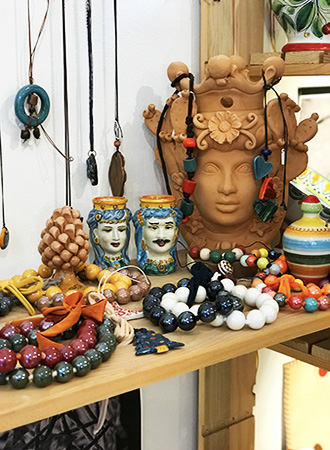
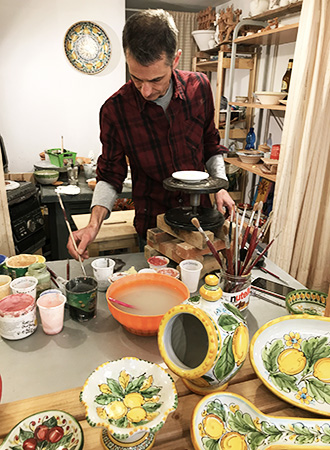
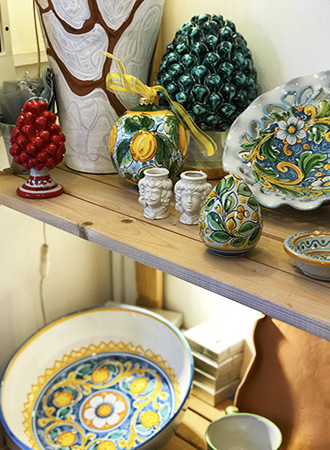
The pinecone has no tragic meaning at all. It is also made in ceramics in different color sizes, which people carry as a symbol of fortune and prosperity. In ancient Egypt and Greece, it represented vital force and eternity. These are good gift and souvenir choices, and are even found in small, easy-to-carry sizes.
An excellent place to buy small and large ceramic decoration items or accessories is the Crita-Laboratorio Ceramiche, an atelier-shop in the center of Palermo, where the owner keeps his workstation open for customers to see. He produces very beautiful quality objects.



